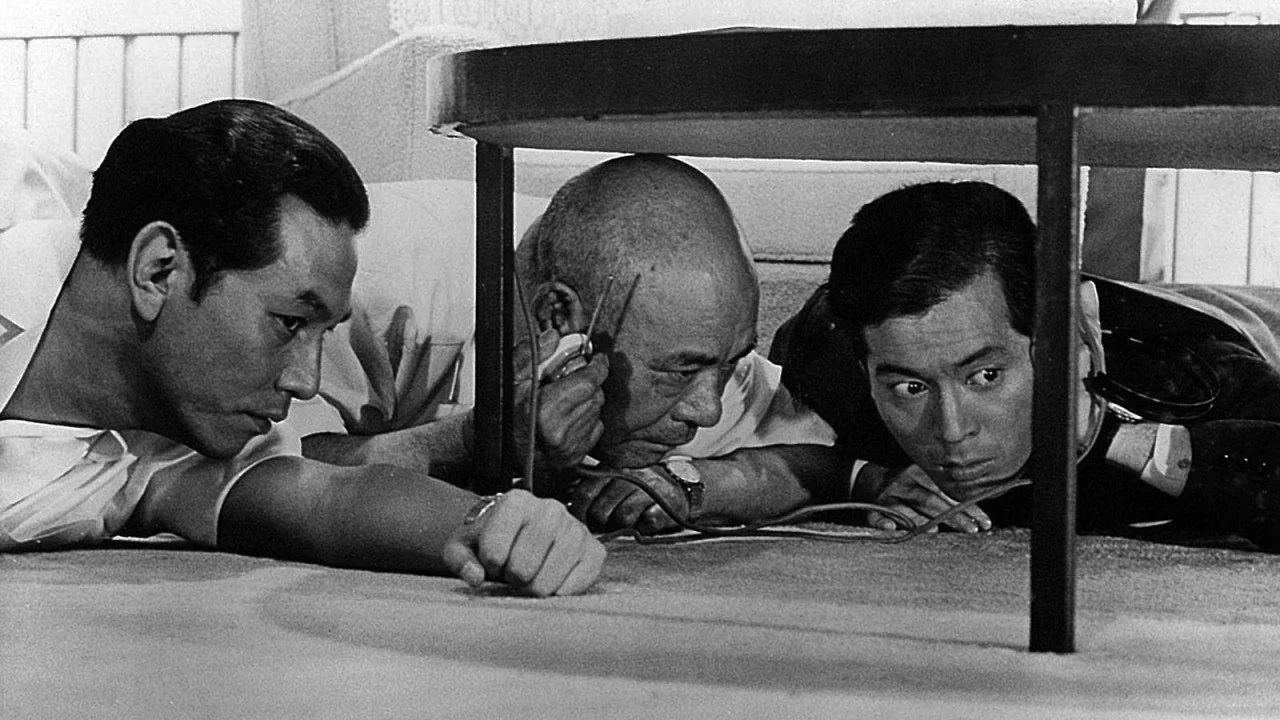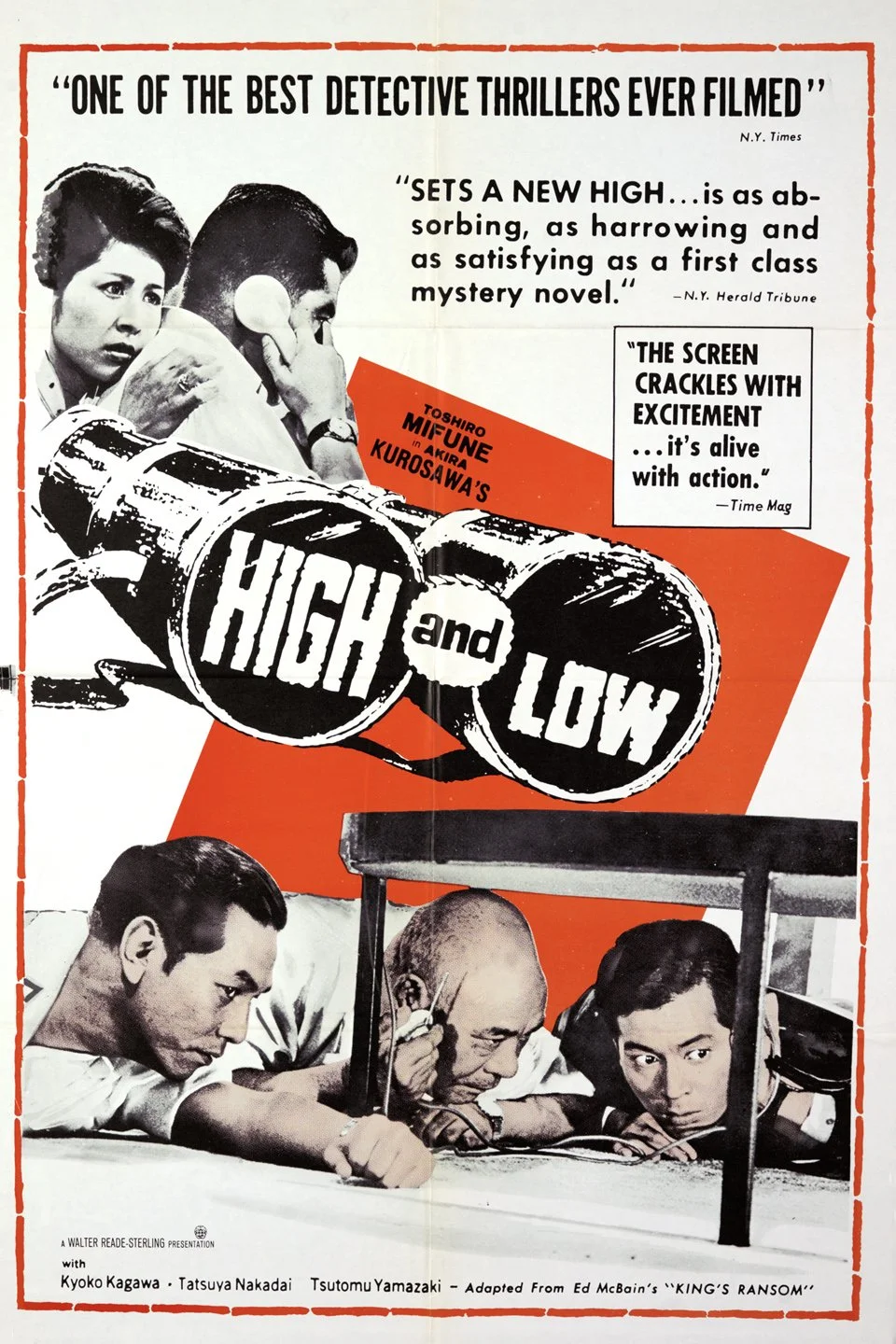‘High and Low’ is a Thrilling Mystery
Kenjirô Ishiyama, Takeshi Katô, and Tatsuya Nakadai in High and Low | Credit: Toho International
With the recent release of the new Spike Lee joint, Highest 2 Lowest, I wanted to watch the original Akira Kurosawa film. And I’m so pleased that I did!
In High and Low, Gondo (Toshirô Mifune) is extorted when his chauffeur’s son is kidnapped in place of his own. We see him grappling with whether to pay a ransom that will financially ruin him. We also follow the police’s investigation into the kidnapper.
I’m a big fan of mysteries and crime dramas in general, so this was right up my alley. And it is a really riveting film. It’s paced perfectly as we watch Gondo’s turmoil in making this decision, and the deliberate police investigation that follows. High and Low takes its time, but it doesn’t feel too long or drawn out. The film pauses when it needs to, lingering when necessary to help us really take in the importance of the moment.
One of the best parts of High and Low is the blocking. My goodness! This film is absolutely gorgeous, and the way that the characters move in the frame is outstanding. We spend the entire first act of the film in Gondo’s home, largely in his living room. He has an initial meeting with other executives at his company, and then he receives the ransom call from that same room. Gondo contemplates what to do in that room, and the chauffeur begs for Gondo’s help from that same space.
Any time that someone is having a difficult or emotional moment, you’ll see other characters turn away from them, an attempt at respect and privacy during such a difficult time. But they don’t leave the room. They stay there, just slowly turning or moving away. This happens again and again, creating this feeling of a constant ebbing and flowing of the characters in the film as they are working through this impossible situation.
Next, I want to discuss a bit more about the second half of the film, which means that I will spoil some things. If you haven’t yet seen High and Low and don’t want it spoiled, don’t read on.
High and Low movie poster | Credit: Toho International
One of the most fascinating things about High and Low is how it’s split into two distinct halves. The first half is centered on Gondo, his inner turmoil, and his eventual decision to pay the ransom. Most of the first half even takes place in Gondo’s home, surrounded by his loved ones and police, as they’re trying not to tip off the kidnapper to their plans.
In the second half of the film, Gondo is hardly seen. His name is spoken often, as police and others comment on how this ordeal has affected him. It’s clear that he’s amassed sympathy from other citizens who laud his decision to pay for the child’s safe return, but we don’t see him. Instead, the second half focuses mainly on the police and their investigation into the disappearance.
I love this decision because it mirrors exactly what the police chief initially says about the case. The officers were instructed to get the boy home safe first, then to go after the kidnapper. That’s what the officers do, and the film follows the same pattern. It’s such a fascinating way to structure this type of film and it absolutely works in this case.
Another aspect that surprised me about High and Low is how riveting the police investigation is. I watch a lot of mysteries and police procedurals, so I expected to be a little bored or underwhelmed by this investigation in a 1960s movie. But I wasn’t! The film lays out a very robust investigation that makes it clear that these investigators were good at their jobs and unwilling to leave any stone unturned.
At one point, there’s a long sequence where different police officers stand up to share their updates with the larger task force. And this scene lasts for so much longer than I expected. I kept expecting it to end, but it just kept going, and I was so happy that it did. Each time new people stood up to give their report, I was impressed by their thoroughness. This lengthy outlining of their investigation helped me trust these officers more and root for them to catch the kidnapper who had been so elusive.
The writing, blocking, cinematography, and editing help make that sequence really exciting to watch, even though it’s so much longer than you would see in a modern film. These technical elements make the description of their investigation interesting and make you want to keep watching to see if their hard and diligent work will end in a positive result.
Toshirô Mifune and Kyôko Kagawa in High and Low | Credit: Toho International
High and Low is a riveting film filled with intrigue as we watch Gondo, his family, and the police navigate this impossible situation. It’s shot beautifully and paced perfectly, methodically unfurling the case as the film goes along. Though this was released over sixty years ago, it’s still a great mystery today and is a worthwhile watch for any mystery fan.




